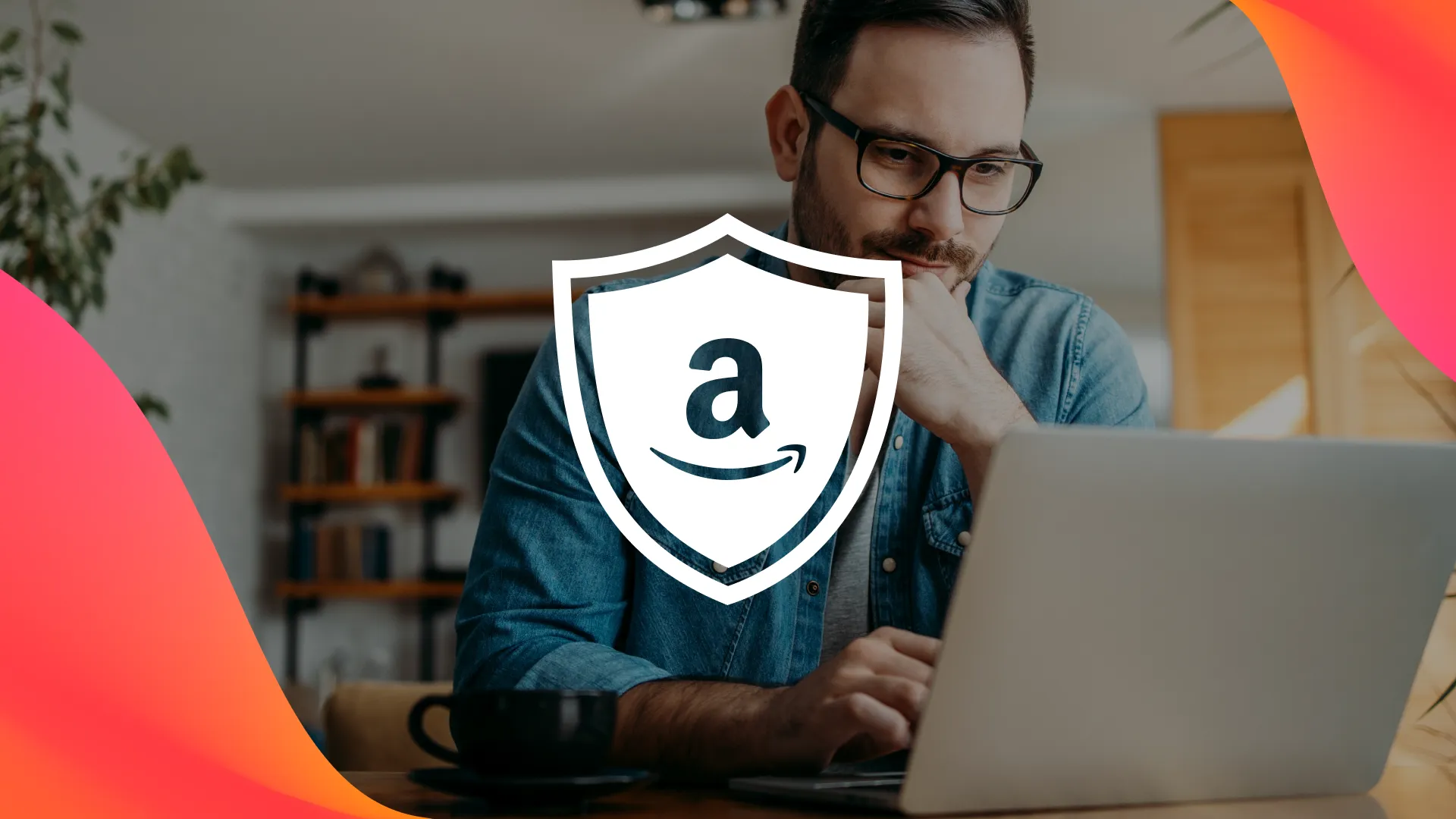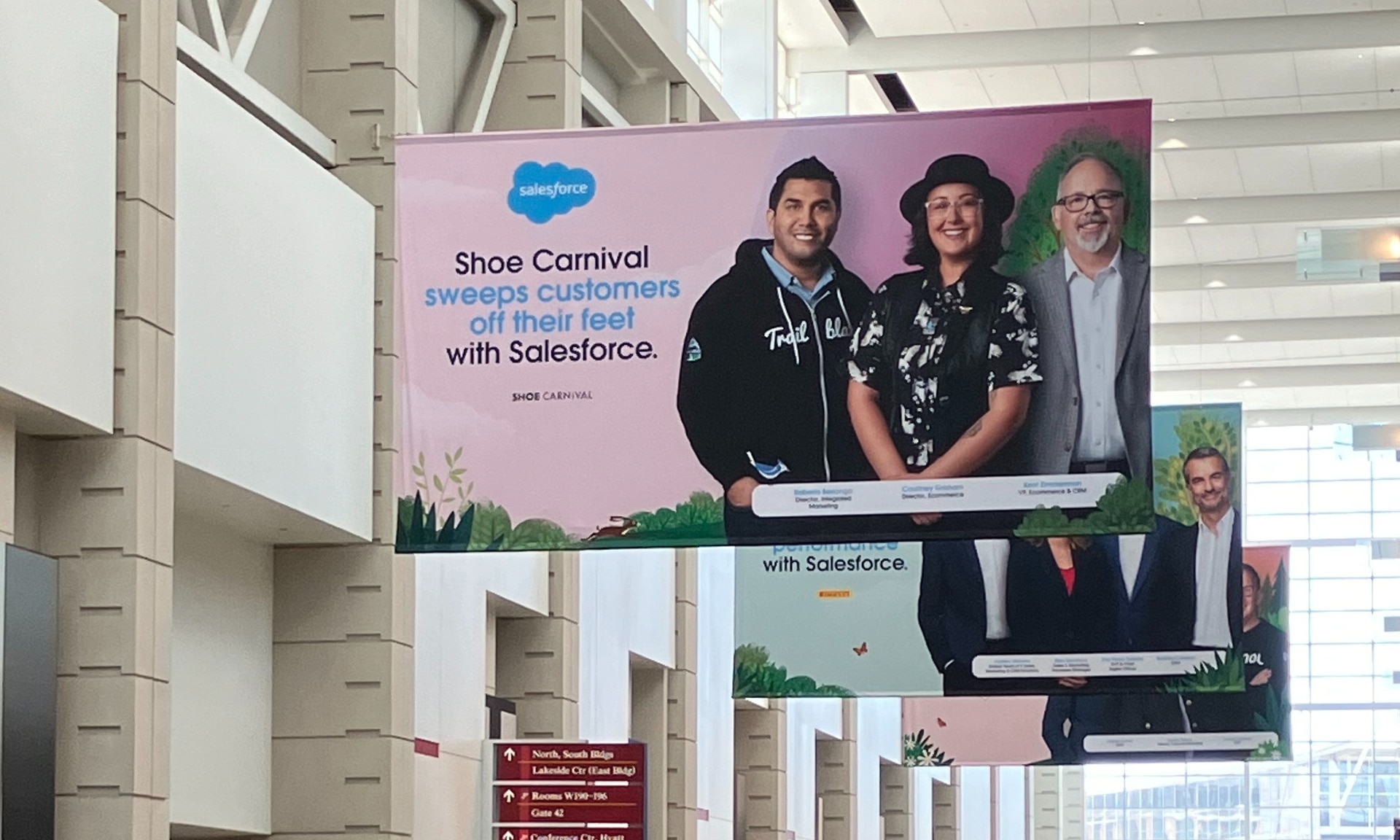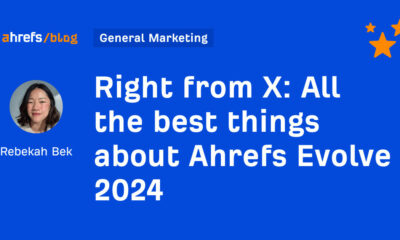MARKETING
Amazon Brand Registry: Key Benefits & How to Apply

If you’re selling on Amazon, you may experience counterfeit issues or situations where your product content is changed by a third party seller.
Luckily, Amazon Brand Registry provides a necessary set of tools to help sellers avoid these issues. In this post, we’ll cover how Amazon’s Brand Registry works, how to enroll, and other brand protection programs that you can use to prevent third-party sellers from counterfeiting your products on the Amazon marketplace.
Let’s dive into all things Amazon Brand Registry.
Table of Contents:
What is Amazon Brand Registry?
Protection from day 1. Amazon Brand Registry is a program that enables verified brand owners to protect their intellectual property, combat counterfeiting, and have more control over their products’ presence and listings on the Amazon marketplace. This tool also gives brand owners access to enhanced reporting tools and more control over their brand across Amazon’s ecosystem.
Amazon designed Brand Registry to help brand owners protect their registered trademarks and create an accurate and trusted experience for customers by providing access to proprietary text and image search, predictive automations, and reporting tools.
“Amazon Brand Registry helps you protect your intellectual property (IP), manage your listings, and grow your business, regardless of whether you sell in our store – for free. You know your brand and intellectual property the best. Simply enroll in Brand Registry and share information about your brand. We will give you peace of mind by activating proactive protections that help stop bad listings and bad actors.”
— Brittany Bellardino, Sr. Specialist, Brand Services, Retail Operations at Tinuiti
Today, Amazon Seller Brand Registry unlocks a powerful suite of programs and features for verified brand owners to not only protect intellectual property but also build their brand presence on Amazon and grow their business. It provides various tools and services to registered brand owners, including Transparency by Amazon, the Project Zero program, the Counterfeit Crimes Unit and IP Accelerator. These are considered Amazon’s Hub of Protection. Let’s take a closer look at each…
Transparency by Amazon
Transparency by Amazon allows brands to apply unique codes or serial numbers to their products, which are then scanned and verified by Amazon before they are shipped to customers. This helps ensure that only authentic products reach consumers and helps protect against counterfeits. Customers can also use the Amazon mobile app to scan these codes and verify the authenticity of the products they receive. It’s important to note that products cannot be listed on Amazon or shipped without valid Transparency codes.
Project Zero Program
The Project Zero program is an initiative within Amazon Brand Registry that empowers brand owners to proactively remove counterfeit listings of their products from the Amazon marketplace. It combines automated protections with self-service tools, enabling brand owners to identify and remove counterfeit listings without needing to involve Amazon’s support team. The program utilizes machine learning algorithms to continuously scan and detect counterfeit listings based on the information provided by the brand owners.
Counterfeit Crimes Unit (CCU)
The Counterfeit Crimes Unit is a dedicated team within Amazon that works to prevent counterfeit products from being sold on the platform. This team includes former federal prosecutors, experienced investigators, and data analysts. They collaborate with brands, government agencies, and law enforcement to pursue legal action against counterfeiters and hold them accountable for their actions. The Counterfeit Crimes Unit also assists in the development and improvement of Amazon’s anti-counterfeiting programs and policies.
These three components of the Amazon Brand Registry work together to provide brand owners with enhanced tools and services to protect their intellectual property and combat counterfeiting on the Amazon marketplace.
IP Accelerator
Sidestep trademark registration pitfalls by accessing our network of trusted IP law firms and get high-quality services at competitive rates. This tool helps your brand obtain quicker access to the protection and building features available to brands in Brand Registry, even while your trademark application is pending. This can also help your brand in establishing IP in other countries with trusted experts as you expand your brand’s footprint in new marketplaces.
Why Was Amazon Brand Registry Launched?
Amazon Brand Registry was launched to address the growing issue of counterfeiting and intellectual property infringement on the Amazon marketplace, providing brand owners with tools and resources to protect their brands, enhance their control over product listings, and maintain customer trust in the authenticity of products sold on Amazon.
What’s New and Changing in Amazon Brand Registry?
Amazon is constantly making updates to improve the Brand Registry program. Most recently, Amazon added a new feature called the Impact Dashboard. This dashboard provides data on how Amazon has provided brand protection based on the intellectual property information provided to them when registering the brands. Data includes the number of infringing ASINs removed, invalid new ASINs prevented, and invalid existing ASIN modifications prevented. These can be broken down at the marketplace, brand, and category level.
Who Can Enroll in the Brand Registry?
Various types of brand owners are eligible to enroll in Amazon Brand Registry. This includes:
Registered Trademark Owners: Brand owners who have an active registered trademark for their brand can enroll in the Amazon Brand Registry. Note: The trademark should be issued by a government trademark office that recognizes the brand in the marketplace where the brand is registered.
Manufacturers: Brand owners who have their products manufactured and want to protect their brand and intellectual property on Amazon can also enroll in the Brand Registry. They may need to provide additional documentation to demonstrate their association with the manufacturing of the products.
It is important to note that each enrolled brand requires a separate application and must meet the eligibility criteria set by Amazon. The specific requirements and documentation may vary depending on the country and region.
The Benefits of Using Amazon Brand Registry
According to Amazon, more than 700,000 brands around the world have an Amazon brand registration and more than 8 billion listings updated scanned everyday. While those are impressive stats, there are many more advantages to consider.
Let’s dive into the top benefits of using Amazon Brand Registry.
1. Protections for Your Brand Representation
Amazon Seller Brand Registry gives you more control over Amazon product pages that use your brand name, so customers are more likely to see the correct information associated with your brand.
In addition to Amazon’s standard proactive measures to protect customers, the Brand Registry uses information that you provide about your brand to implement additional predictive protections that attempt to identify and remove potentially bad listings.
The more you tell Amazon’s Brand Registry team about your brand and its intellectual property, the more Amazon can help you protect your brand, for example:
- Product listings that aren’t for your brand and incorrectly use your trademarked terms in their titles
- Images that contain your logo, but are for products that don’t carry your brand name
- Sellers shipping products from countries in which you do not manufacture or distribute your brand
- Product listings being created with your brand name when you have already listed your full product catalog on Amazon
2. Powerful Search and Reporting Tools
Amazon simplifies the process of finding cases of potential infringement with custom features designed specifically for brands:
- Global search: search for content in different Amazon stores from the same screen without ever having to navigate away
- Image search: find product listings on Amazon that match your product(s) or logo(s) using images
- Bulk ASIN search: search for a list of ASINs or product URLs in bulk to explore and report potentially infringing content fast (plus enlarge image thumbnails in this tool for easier identification of infringers)
- Sort view of average customer ratings of ASINs to gauge popularity
After you complete your search, the Brand Registry provides you with simple and guided workflows to submit a report of potential infringement that Amazon can review and take appropriate action on.
3. Access to A+ Content
When you utilize Brand Registry, you are also eligible for additional brand programs like Amazon A+ Content. A+ Content enables you to showcase your brand’s unique story and educate customers about your product’s distinctive features. With its ability to showcase enhanced product images and customize text placements on the product detail page, A+ Content empowers you to highlight what sets your brand and products apart from the competition.
4. Sponsored Brand Ads
An additional feature of Amazon’s Brand Registry program to take advantage of is Sponsored Brand Ads. Amazon Sponsored Brands Ads are banner ads that include a brand’s logo, message, and products in Amazon’s search results. Sponsored Brands are an effective way to build top-funnel awareness by allowing your brand to show your offering for specific shopper search queries. They can be used to drive shoppers to a specific product category, a product listing, or your Store on Amazon.
5. Understand Customers with Brand Analytics
Brand Analytics is yet another tool you can use within Amazon’s Brand Registry program that allows you to understand your customers on an even deeper level. Brand Analytics offers sellers a wide range of reports. These reports enable users to gain insights into their current and future product performance, gather information on customer demographics, identify popular search terms, explore advertising opportunities, and much more.
6. Host Live Shopping Sessions with Amazon Live
When you enroll in Amazon’s Brand Registry Program, you’ll also be eligible for Amazon Live. Amazon Live gives you the opportunity to engage with customers in real-time with live shopping events. With Amazon live you can not only showcase your products in real-time, you can also share your brand story to further connect with your customers.
7. Create an Amazon Store
Within Brand Registry, you’ll also have access to Amazon Stores. Amazon Stores allow brand owners to design and create multipage stores to showcase their brands, products, and value proposition on Amazon. The main benefit of Amazon Stores is providing customized content to potential customers while introducing them to your brand.
See examples of Amazon Stores here.
For a full list of the brand building products you can utilize when you sign up for Amazon Brand Registry, click here.
8. Improve Customer Experience
Better manage content and photos on detail pages for your products to help ensure your customers see accurate information. We will combine your information with our automated protections and machine learning to prevent inaccurate updates. This provides trust with your customers and will keep them coming back.
Amazon Brand Registry Eligibility & Application Requirements
Amazon has a unique set of Brand Registry eligibility and application requirements. To see if you meet the eligibility requirements of Amazon brand registry application, keep reading.
Step 1: Ensure You’re Eligible
The first thing you need to have is a Seller Central Account. If you don’t already have one, you can register for one on Amazon’s official website. Accounts with a vendor relationship with Amazon can enroll in Brand Registry, where they will be asked to provide their vendor code associated with the brand they want to register.
Next, you have to create an account through Amazon Brand Registry. Amazon will ask for your registered Trademark Number as well as one form of social media. Your brand must have an active registered trademark in each country where you wish to enroll.
The trademark for your brand must be in the form of a text-based mark or an image-based mark with words, letters, or numbers. Depending on where your trademark is registered, eligible trademarks can have different classifications based on their issuing trademark office.
Below are examples of trademarks that Amazon is currently accepting for enrollment:
Source: Amazon
Amazon currently only accepts trademarks that have been issued by government trademark offices in the United States, Brazil, Canada, Mexico, Australia, India, Japan, France, Germany, Italy, Turkey, Singapore, Spain, Saudi Arabia, the United Kingdom, Egypt, Sweden, Poland, Benelux, the European Union, and the United Arab Emirates.
If your trademark is pending registration, don’t fret. Amazon Brand Registry will accept pending trademarks from certain trademark offices. For U.S. brands, this means your trademark must be pending registration with the United States Patent and Trademark Office (USPTO).
Step 2: Sign into Amazon Brand Registry
If you meet the eligibility requirements, the next step is to sign into Amazon Seller Brand Registry. If you are a Vendor or Seller on Amazon, use your Vendor or Seller Central credentials to sign in.
Using the same username and password will enable you to access the features and benefits of Amazon Brand Registry that are linked to Vendor and Seller services. If you don’t yet have an Amazon account, you can create one for free here.
Step 3: Enroll your brand
To qualify for an Amazon Brand registration, you will need to provide the following information:
- Your brand name that has an active registered trademark
- The associated government-registered trademark number
- A list of product categories (e.g., apparel, sporting goods, electronics) in which your brand should be listed
- A list of countries where your brand’s products are manufactured and distributed
You can find a full list of Brand Registry eligibility requirements here.
Amazon Brand Registry Costs
As of now, there are no Amazon Brand Registry costs. However, you will need to have a registered trademark in order to qualify for a Brand Registry application.
Registered trademark fees typically range from $225 to $400. However, these fees can vary depending on the class of protection you want to buy.
How to Get a Trademark for an Amazon Brand Registry Application
A trademark number is the number assigned to a pending or registered trademark. This number is issued by the United States Patent and Trademark Office (USPTO). Pending trademarks are given serial numbers, and registered trademarks are issued registration numbers.
How to Get a Trademark
You can apply for a trademark online by going to www.uspto.gov and completing a TEAS form. The process can take up to 9 months. Application costs vary based on the filing type selected and the class of goods or service being registered. You can read more about the fees on the official site.
Submitting Your Trademark for the Brand Registry
Once you’ve submitted the Brand Registry application, Amazon will then send an email to the person or address connected to the Trademark account. This email will contain a case number code.
When you receive this case number code, go to your Seller Central application and paste it into the required field. The Trademark can be pending or active to work.
Once all the pieces are in place and all the information completed, the Brand Registry will be completed relatively quickly. Some people have even reported overnight turnaround times; however, this may vary from person to person.
Key Takeaways
Amazon Brand Registry provides enhanced tools and services to protect intellectual property, combat counterfeiting, and maintain control over your product listings on the Amazon marketplace. It not only safeguards your brand reputation but it ensures a trustworthy shopping experience for your customers. For more information on Amazon Brand Registry or for any additional questions, contact us today.
Learn more about our Amazon Strategy and Services.
Source: Amazon
MARKETING
YouTube Ad Specs, Sizes, and Examples [2024 Update]
![YouTube Ad Specs, Sizes, and Examples [2024 Update] YouTube Ad Specs, Sizes, and Examples](https://articles.entireweb.com/wp-content/uploads/2024/06/YouTube-Ad-Specs-Sizes-and-Examples.jpg)
Introduction
With billions of users each month, YouTube is the world’s second largest search engine and top website for video content. This makes it a great place for advertising. To succeed, advertisers need to follow the correct YouTube ad specifications. These rules help your ad reach more viewers, increasing the chance of gaining new customers and boosting brand awareness.
Types of YouTube Ads
Video Ads
- Description: These play before, during, or after a YouTube video on computers or mobile devices.
- Types:
- In-stream ads: Can be skippable or non-skippable.
- Bumper ads: Non-skippable, short ads that play before, during, or after a video.
Display Ads
- Description: These appear in different spots on YouTube and usually use text or static images.
- Note: YouTube does not support display image ads directly on its app, but these can be targeted to YouTube.com through Google Display Network (GDN).
Companion Banners
- Description: Appears to the right of the YouTube player on desktop.
- Requirement: Must be purchased alongside In-stream ads, Bumper ads, or In-feed ads.
In-feed Ads
- Description: Resemble videos with images, headlines, and text. They link to a public or unlisted YouTube video.
Outstream Ads
- Description: Mobile-only video ads that play outside of YouTube, on websites and apps within the Google video partner network.
Masthead Ads
- Description: Premium, high-visibility banner ads displayed at the top of the YouTube homepage for both desktop and mobile users.
YouTube Ad Specs by Type
Skippable In-stream Video Ads
- Placement: Before, during, or after a YouTube video.
- Resolution:
- Horizontal: 1920 x 1080px
- Vertical: 1080 x 1920px
- Square: 1080 x 1080px
- Aspect Ratio:
- Horizontal: 16:9
- Vertical: 9:16
- Square: 1:1
- Length:
- Awareness: 15-20 seconds
- Consideration: 2-3 minutes
- Action: 15-20 seconds
Non-skippable In-stream Video Ads
- Description: Must be watched completely before the main video.
- Length: 15 seconds (or 20 seconds in certain markets).
- Resolution:
- Horizontal: 1920 x 1080px
- Vertical: 1080 x 1920px
- Square: 1080 x 1080px
- Aspect Ratio:
- Horizontal: 16:9
- Vertical: 9:16
- Square: 1:1
Bumper Ads
- Length: Maximum 6 seconds.
- File Format: MP4, Quicktime, AVI, ASF, Windows Media, or MPEG.
- Resolution:
- Horizontal: 640 x 360px
- Vertical: 480 x 360px
In-feed Ads
- Description: Show alongside YouTube content, like search results or the Home feed.
- Resolution:
- Horizontal: 1920 x 1080px
- Vertical: 1080 x 1920px
- Square: 1080 x 1080px
- Aspect Ratio:
- Horizontal: 16:9
- Square: 1:1
- Length:
- Awareness: 15-20 seconds
- Consideration: 2-3 minutes
- Headline/Description:
- Headline: Up to 2 lines, 40 characters per line
- Description: Up to 2 lines, 35 characters per line
Display Ads
- Description: Static images or animated media that appear on YouTube next to video suggestions, in search results, or on the homepage.
- Image Size: 300×60 pixels.
- File Type: GIF, JPG, PNG.
- File Size: Max 150KB.
- Max Animation Length: 30 seconds.
Outstream Ads
- Description: Mobile-only video ads that appear on websites and apps within the Google video partner network, not on YouTube itself.
- Logo Specs:
- Square: 1:1 (200 x 200px).
- File Type: JPG, GIF, PNG.
- Max Size: 200KB.
Masthead Ads
- Description: High-visibility ads at the top of the YouTube homepage.
- Resolution: 1920 x 1080 or higher.
- File Type: JPG or PNG (without transparency).
Conclusion
YouTube offers a variety of ad formats to reach audiences effectively in 2024. Whether you want to build brand awareness, drive conversions, or target specific demographics, YouTube provides a dynamic platform for your advertising needs. Always follow Google’s advertising policies and the technical ad specs to ensure your ads perform their best. Ready to start using YouTube ads? Contact us today to get started!
MARKETING
Why We Are Always ‘Clicking to Buy’, According to Psychologists

Amazon pillows.
MARKETING
A deeper dive into data, personalization and Copilots

Salesforce launched a collection of new, generative AI-related products at Connections in Chicago this week. They included new Einstein Copilots for marketers and merchants and Einstein Personalization.
To better understand, not only the potential impact of the new products, but the evolving Salesforce architecture, we sat down with Bobby Jania, CMO, Marketing Cloud.
Dig deeper: Salesforce piles on the Einstein Copilots
Salesforce’s evolving architecture
It’s hard to deny that Salesforce likes coming up with new names for platforms and products (what happened to Customer 360?) and this can sometimes make the observer wonder if something is brand new, or old but with a brand new name. In particular, what exactly is Einstein 1 and how is it related to Salesforce Data Cloud?
“Data Cloud is built on the Einstein 1 platform,” Jania explained. “The Einstein 1 platform is our entire Salesforce platform and that includes products like Sales Cloud, Service Cloud — that it includes the original idea of Salesforce not just being in the cloud, but being multi-tenancy.”
Data Cloud — not an acquisition, of course — was built natively on that platform. It was the first product built on Hyperforce, Salesforce’s new cloud infrastructure architecture. “Since Data Cloud was on what we now call the Einstein 1 platform from Day One, it has always natively connected to, and been able to read anything in Sales Cloud, Service Cloud [and so on]. On top of that, we can now bring in, not only structured but unstructured data.”
That’s a significant progression from the position, several years ago, when Salesforce had stitched together a platform around various acquisitions (ExactTarget, for example) that didn’t necessarily talk to each other.
“At times, what we would do is have a kind of behind-the-scenes flow where data from one product could be moved into another product,” said Jania, “but in many of those cases the data would then be in both, whereas now the data is in Data Cloud. Tableau will run natively off Data Cloud; Commerce Cloud, Service Cloud, Marketing Cloud — they’re all going to the same operational customer profile.” They’re not copying the data from Data Cloud, Jania confirmed.
Another thing to know is tit’s possible for Salesforce customers to import their own datasets into Data Cloud. “We wanted to create a federated data model,” said Jania. “If you’re using Snowflake, for example, we more or less virtually sit on your data lake. The value we add is that we will look at all your data and help you form these operational customer profiles.”
Let’s learn more about Einstein Copilot
“Copilot means that I have an assistant with me in the tool where I need to be working that contextually knows what I am trying to do and helps me at every step of the process,” Jania said.
For marketers, this might begin with a campaign brief developed with Copilot’s assistance, the identification of an audience based on the brief, and then the development of email or other content. “What’s really cool is the idea of Einstein Studio where our customers will create actions [for Copilot] that we hadn’t even thought about.”
Here’s a key insight (back to nomenclature). We reported on Copilot for markets, Copilot for merchants, Copilot for shoppers. It turns out, however, that there is just one Copilot, Einstein Copilot, and these are use cases. “There’s just one Copilot, we just add these for a little clarity; we’re going to talk about marketing use cases, about shoppers’ use cases. These are actions for the marketing use cases we built out of the box; you can build your own.”
It’s surely going to take a little time for marketers to learn to work easily with Copilot. “There’s always time for adoption,” Jania agreed. “What is directly connected with this is, this is my ninth Connections and this one has the most hands-on training that I’ve seen since 2014 — and a lot of that is getting people using Data Cloud, using these tools rather than just being given a demo.”
What’s new about Einstein Personalization
Salesforce Einstein has been around since 2016 and many of the use cases seem to have involved personalization in various forms. What’s new?
“Einstein Personalization is a real-time decision engine and it’s going to choose next-best-action, next-best-offer. What is new is that it’s a service now that runs natively on top of Data Cloud.” A lot of real-time decision engines need their own set of data that might actually be a subset of data. “Einstein Personalization is going to look holistically at a customer and recommend a next-best-action that could be natively surfaced in Service Cloud, Sales Cloud or Marketing Cloud.”
Finally, trust
One feature of the presentations at Connections was the reassurance that, although public LLMs like ChatGPT could be selected for application to customer data, none of that data would be retained by the LLMs. Is this just a matter of written agreements? No, not just that, said Jania.
“In the Einstein Trust Layer, all of the data, when it connects to an LLM, runs through our gateway. If there was a prompt that had personally identifiable information — a credit card number, an email address — at a mimum, all that is stripped out. The LLMs do not store the output; we store the output for auditing back in Salesforce. Any output that comes back through our gateway is logged in our system; it runs through a toxicity model; and only at the end do we put PII data back into the answer. There are real pieces beyond a handshake that this data is safe.”













